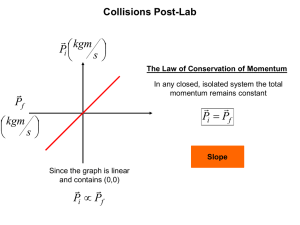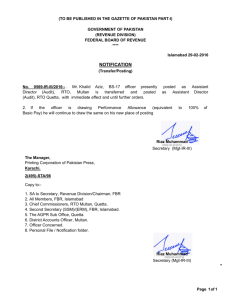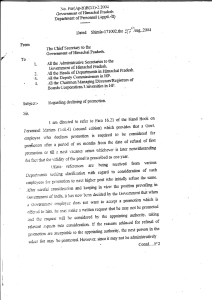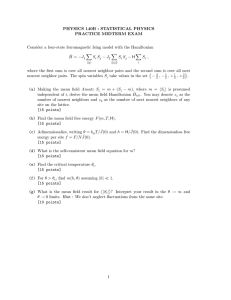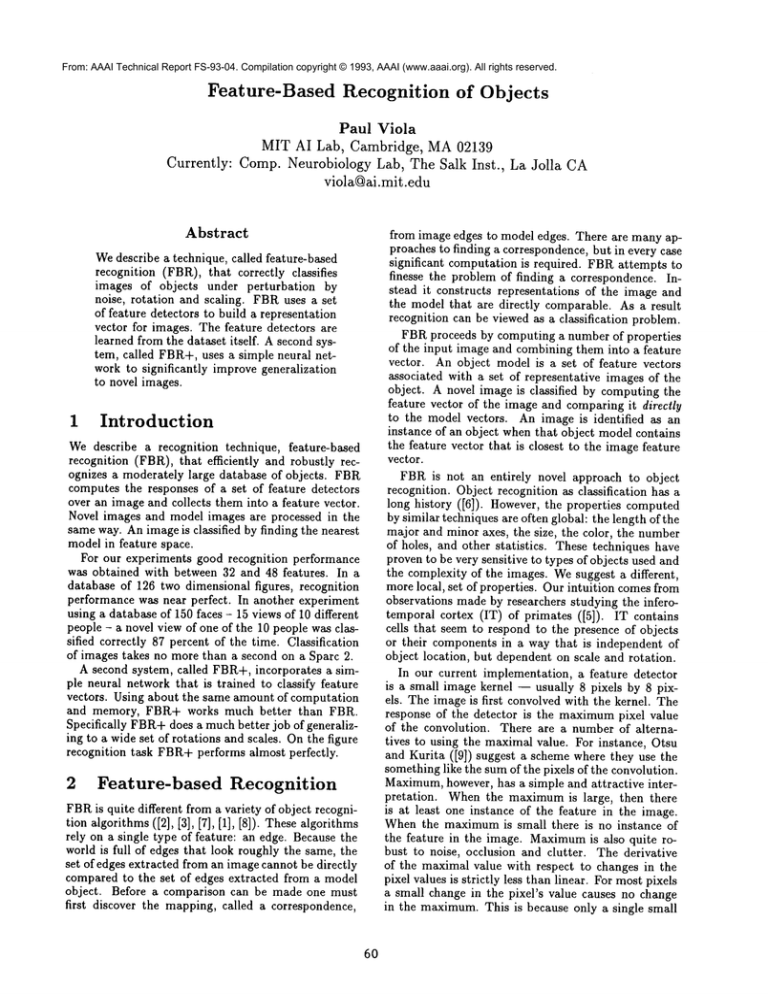
From: AAAI Technical Report FS-93-04. Compilation copyright © 1993, AAAI (www.aaai.org). All rights reserved.
Feature-Based
Recognition
of Objects
Paul Viola
MITAI Lab, Cambridge, MA02139
Currently: Comp.Neurobiology Lab, The Salk Inst., La Jolla CA
viola@ai.mit.edu
Abstract
Wedescribe a technique, called feature-based
recognition (FBR), that correctly classifies
images of objects under perturbation
by
noise, rotation and scaling. FBRuses a set
of feature detectors to build a representation
vector for images. The feature detectors are
learned from the dataset itself. A second system, called FBR+,uses a simple neural network to significantly improve generalization
to novel images.
1
Introduction
Wedescribe a recognition technique, feature-based
recognition (FBR), that efficiently and robustly recognizes a moderately large database of objects. FBR
computes the responses of a set of feature detectors
over an image and collects them into a feature vector.
Novel images and model images are processed in the
same way. An image is classified by finding the nearest
model in feature space.
For our experiments good recognition performance
was obtained with between 32 and 48 features. In a
database of 126 two dimensional figures, recognition
performance was near perfect. In another experiment
using a database of 150 faces - 15 views of 10 different
people - a novel view of one of the 10 people was classifted correctly 87 percent of the time. Classification
of images takes no more than a second on a Spare 2.
A second system, called FBR+,incorporates a simple neural network that is trained to classify feature
vectors. Using about the same amount of computation
and memory, FBR+ works much better than FBR.
Specifically FBR+does a muchbetter job of generalizing to a wide set of rotations and scales. Onthe figure
recognition task FBR+performs almost perfectly.
2
Feature-based
Recognition
FBRis quite different from a variety of object recognition algorithms ([2], [3], [7], [1], [8]). Thesealgorithms
rely on a single type of feature: an edge. Because the
world is full of edges that look roughly the same, the
set of edges extracted from an image cannot be directly
compared to the set of edges extracted from a model
object. Before a comparison can be made one must
first discover the mapping, called a correspondence,
6O
from image edges to model edges. There are many approaches to finding a correspondence, but in every case
significant computation is required. FBRattempts to
finesse the problem of finding a correspondence. Instead it constructs representations of the image and
the model that are directly comparable. As a result
recognition can be viewed as a classification problem.
FBRproceeds by computing a number of properties
of the input image and combining them into a feature
vector. An object model is a set of feature vectors
associated with a set of representative images of the
object. A novel image is classified by computing the
feature vector of the image and comparing it directly
to the model vectors. An image is identified as an
instance of an object when that object model contains
the feature vector that is closest to the image feature
vector.
FBRis not an entirely novel approach to object
recognition. Object recognition as classification has a
long history ([6]). However, the properties computed
by similar techniques are often global: the length of the
major and minor axes, the size, the color, the number
of holes, and other statistics.
These techniques have
proven to be very sensitive to types of objects used and
the complexity of the images. Wesuggest a different,
more local, set of properties. Our intuition comes from
observations made by researchers studying the inferotemporal cortex (IT) of primates ([5]). IT contains
cells that seem to respond to the presence of objects
or their components in a way that is independent of
object location, but dependent on scale and rotation.
In our current implementation, a feature detector
is a small image kernel -- usually 8 pixels by 8 pixels. The image is first convolved with the kernel. The
response of the detector is the maximumpixel value
of the convolution. There are a number of alternatives to using the maximal value. For instance, Otsu
and Kurita ([9]) suggest a scheme where they use the
something like the sum of the pixels of the convolution.
Maximum,however, has a simple and attractive interpretation.
When the maximumis large, then there
is at least one instance of the feature in the image.
Whenthe maximumis small there is no instance of
the feature in the image. Maximumis also quite robust to noise, occlusion and clutter. The derivative
of the maximal value with respect to changes in the
pixel values is strictly less than linear. For most pixels
a small change in the pixel’s value causes no change
in the maximum.This is because only a single small
Noise
Small Rot.
Translation
Small Rot.
+ Trans.
Rotation
nmmmJmmm
74
94
32
7O
Table 1: The results of the experiments performed on
the figure dataset with FBRand a nearest neighbor
classifier. The figures given are in percent. Since the
dataset contained 126 figures chance is less than 1%
Figure 1: The 32 8x8 features used in the figure experiments.
windowof the image participates in the value of the
maximum.For the participating pixels the derivative
of the maximumis linear. In addition, occlusion and
clutter only affect the maximumvalue in rare cases.
The maximum
is changed if the only instance of a feature is occluded, or if an instance of the feature is
added to an image where the feature was absent.
Feature detector selection is a critical aspect of FBR.
In most of our experiments we selected features from
the model images themselves. The technique with
which we have had the most success simply attempts to
select features that are orthogonal. The selection process is recursive. Initially the set is empty. Weselect
at random a sub-window of one of the model images.
This sub-windowis used as the kernel for a candidate
detector. The candidate detector is then compared to
each of the detectors in the current feature detector
set. If it is found to be significantly different, as determined by a normalized pixel-wise dot product, it
is accepted into the set. A threshold parameter controls the spread of the features. Wehave also experimented with generating random features. These two
techniques are "unsupervised", because they do not
attempt to select features with regard to classification
performance. FBR+, which we will describe below,
can select features in a supervised fashion. FBR+
learns to use reliable features and disregard unreliable
that this is not a trivial task. Manyof the characters
are very similar: differing only in thickness or highlights. In these experiments the same set of 32 features
was used (Fig. 1). Each feature was an 8 by 8 segment
of an image. They were selected for orthogonality by
the technique described above.
Five different experiments were performed:
¯ Noise: Each of the figures were perturbed by 10%
additive noise and 1%of the pixels were set randomly to either the maximumor minimumvalue.
¯ Small Rotation: Each of the figures were rotated 10 degrees counter-clockwise.
¯ Translation: Each of the figures were translated
2 pixels left and 2 pixels up. The resulting shift
is about 3 pixels.
¯ Small Rotation -Jr Translation:
Each of the
figures were rotated 10 degrees counter-clockwise
and then translated 2 pixels left and 2 pixels up.
¯ Rotation: Each of the figures were rotated 20
degrees clockwise.
In order to evaluate the performance of the system
two criteria are used. The classification is considered
correct if the correct figure is the nearest vector in feature space. The classification is considered a near-miss
if the correct figure is one of the four nearest feature
vectors. Otherwise the classification is considered an
error.
In order to establish a baseline for performance on
this problem we employeda nearest neighbor classifier.
Weuse the actual model image as the object model. A
novel image is classified by finding the nearest model
image. Wedefine the distance between two images as
the sumof the square of the differences between pixels.
The results of these experiments are given in Table 1.
In order to make the comparison fair in three of our
experiments the figures in the test images were precisely aligned with the figures in the modelimages. In
the other two experiments this assumption was relaxed
and a shift of 3 pixels was introduced. The performance of nearest neighbor is significantly dependent
on the alignment of the test images. FBRis not. In
ones.
Our results were not very dependent on the particular set of feature detectors selected. All of our experiments were run many times with different sets of
features. Little or no difference in performance was
observed. Our experimental results were dependent
on the numberof features selected. In general performance increases with the number of features until it
reaches a plateau. Because computation time grows
linearly with the number of features we have not attempted to discover the limits of this plateau.
3
FBR
Nearest Neighbor
Correct
N.M. Correct
N.M.
100
100
100
100
100
100
87
99
100
100
23
52
43
100
100
2O
FBR
In our first experiment we attempted to classify 126
two dimensional figures taken from a postscript ZapfDingbats font (Fig. 2). Each image is 48 by 48 pixels.
A close look at the dataset should reassure the reader
61
,z 1¢ X St
÷
÷
X 4. ÷
q- 4. t
~r O ~r
# $
O m
&
t
÷
÷
4-
~r ~r ~x
$
O O
O O
$
D
V
~t
T
4
c~
Figure 2: The 126 two dimensional figures used in our experiments.
Figure 4: The 48 feature detectors used in the face experiments. On the left are the features that are applied
at the highest resolution. Onthe right are features applied at the lowest resolution.
Figure 3: The fifteen views of a single person in the
database.
order to apply nearest neighbor in more realistic situations, where an alignment of the image and the model
cannot be guaranteed, it is necessary to find the best
translation of the model images. This increases the
complexity of using nearest neighbor significantly. In
our experiments, for similarly implemented code, FBR
runs 10 times faster than a nearest neighbor scheme
that finds the best translation of the model.
4
Face Recognition
The figure dataset is somewhat simplistic. It is not
clear that a technique that works well on figures would
work well on real images of real objects. To address
this concern, we have obtained a database of face im~. Faces are accepted
ages on which we have tested FBR
as one of the hardest real problems in object recognition. Classical recognition schemes do not work well
on faces.
The face database contains fifteen views of each of
~Thanksto Dave Beymerof the MITAI Lab for allowing me to use this data. He workedvery hard to acquire
it. That’s himin the figures.
62
ten people (Fig. 3). Where before there was one image
for each figure, nowthere are several images associated
with each person. A novel image will be considered
correctly classified if its nearest neighbor is one of the
model images of that person. Rather than split the
data set, we chose to perform full cross-validation. In
this paradigmeach examplefrom the training set is left
out in turn and classified using the rest of the data set.
FBRattains a performance of 87%.
Wemade no attempt to simplify the face database.
Each image is of a person, from the shoulders up, in
front of a white background. The person is asked to
look in turn at 15 different targets. Someeffort was
madeto ask the subject to control the position of her
head. But, in practice head position varies across the
views.
It was necessary to generalize FBRto work on the
Laplacian pyramid of the input image. The Laplacian
removes any dependency on simple changes in lighting;
while the pyramid representation provides for features
at different levels of resolution. The input images were
64 by 64. The pyramids constructed have 3 levels with
64 by 64, 32 by 32, and 16 by 16 pixels respectively.
Each feature works at one of the levels. For our experiments we used 16 features at each level for a total of
48 (Fig. 4).
0~t ~t
O-
Figure 5: The general architecture of the three layer
FBR+network. The input layer has one unit for every
feature detector. Each input unit projects to a single
hidden unit. There is one output unit for each object.
Every hidden unit projects to every output unit. The
units in the output layer competeusing a softmax nonlinearity.
5
0-
Figure 6: This is one example of the augmented figure set used in the FBR+experiments. The network
is expected to classify each of these figures as being
instances of the same object.
FBR+
From the above discussion it should be clear that
FBRis somewhat limited in its ability to correctly
classify a wide range of transformations of an object.
One way FBl~’s performance can be improved is to remembermanyviews of an object. Weuse this strategy
in the face recognition experiments. But a conservative estimate based on the performance described in
Section 3 leads us to the conclusion that FBR may
need as many as eighteen thousand views of an object
to reliably classify it under a wide range of six dimensional transformations (ten different X and Y scales,
eighteen different in-the-plane rotations and ten different faces of the object). This is not as depressing
as it might sound. A practical system could still be
built under this assumption. For an optimized implementation on a workstation, it would take about 100
millisecond to compare every view of an object to an
image. Nevertheless, it would be better if an image
could be classified by comparing it against a smaller
number of prototypical views of an object. There are
several ways one might approach this problem. We
have had good success training a simple neural network to discover these prototypical views.
FBR+uses a simple three layer neural network to
classify image feature vectors. The network has N input units, a single hidden layer of N units, and an
output layer of M units (where N is the number of
feature detectors and Mis the numberof different objects). Each hidden unit is connected to a single input
unit. Each output unit is connected to every hidden
unit (see Figure 5). The output units compete in
stochastic form of winner-take-all called soflmax ([4]).
As before each input image is represented by an N
dimensional vector of feature values. The outputs of
the network are M dimensional vectors - one dimen-
63
Figure 7: These are the 10 additional views of each
person added to the database. Notice that the pose of
the face and the expression is far less constrained than
in the original set.
sion for each object. The target outputs for each input are zero for each object except the correct object, whose target is one (i.e. each input is assumed
to be an instance of only one object). This type of
input/output relationship is used quite frequently in
the connectionist literature. The network is trained to
classify a wide variety of transformed images of each
object. It is tested on a disjoint set of transformed
images of the same objects. In all cases the network
learns to correctly classify a surprisingly large variety
of transformations.
In some of our experiments with FBR+ we used a
reduced dataset of 75 figures. These were the first 75
shown in Figure 2. The dataset size was reduced to
make the training set more manageable. In all we performed four experiments to determine the performance
of FBR+:
¯ ROTATION:We trained the network on 8 different rotations of each figure in the plane: from
45 degrees clockwise to 45 degrees counterclockwise - there are a total of 8.75 = 600 training patterns. The network was tested with a set of 15 different rotations taken from the same angle range
-there were 1125 testing examples (see Figure 6).
FBR÷classifies both the testing and training sets
with better than 99% accuracy (0/600 training,
10/1125 testing).
of the Massachusetts Institute of Technology. Support was provided directly and indirectly from the
Fairchild Foundation, from Air Force Office of Scientific Research grant AFOSR-89-0500and by a National Science Foundation Presidential YoungInvestigator Award. Someof the work described in this paper was done at the Salk Institute in the Laboratory
of Terry Sejnowski.
¯ SCALE:We trained the network on 5 different
scalings of each figure from 0.5 to 3.0 times the
original area. The network was tested on 10 different scales taken from the range (see Figure 6).
FBR+classifies both the testing and training sets
with better than 99%accuracy (0/375 training,
4/750 testing).
¯ SCALE + ROTATION: We combined
the
above training and testing sets. This experiment
was designed to insure that there would be no
unforseen couplings between rotation and scale.
FBR+classifies both the testing and training sets
with better than 99%accuracy (0/975 training,
13/1875 testing).
¯ FACES:We trained the network to correctly
identify the person in the image. As in our previous experiments there were 10 different people. To
make the task harder, we include 10 new views of
each person. These views included a wider range
of head motions for a total of 25 views of each person (see Figure 7). The network was tested using
a cross-validation
scheme. From random weights
the network is trained on all but one of the examples. The network is then tested on the example
that is held out. This is repeated for each example. FBR+classifies
the test examples with
better than 95%accuracy.
References
[1] N. Ayache and O. D. Faugeras. HYPER:A new approach for the recognition and positioning of twodimensional objecs. IEEE Transactions on Pattern
Analysis and Machine Intelligence, PAMI-8(1):4454, 1986.
[2] Dana H. Ballard. Generalizing the Hough transform to detect arbitrary shapes. Pattern Recognition, 3(2):836-840, 1981.
[3] Robert C. Bolles and R.A. Cain. Recognizing
and locating partially visible objects: The localfeature-focus
method. International
Journal of
Robotics Research, 1(3):57-82, 1982.
[4] John S. Bridle. Training stochastic model recognition algorithms as networks can lead to maximum
mutual information estimation of parameters. In
David S. Touretzky, editor, Advances in Neural
Information Processing 2, pages 211-217. Morgan
Kaufman, 1989.
[5] Robert Desimone, T. D. Albright, Charles G.
Gross, and C. Bruce. Stimulus selective properties of inferior temporal neurons in the macaque.
Journal of Neuroscience, 4:2051-2062, 1984.
The hidden layer of the FBR+network learns to
perform an adaptive thresholding operation, classifying different outputs of a particular feature detector
as either a strong or weak response. There are two
modifiable parameters, a threshold point and a slope
for the threshold function. In the output layer, there
is one unit for each type of object. This unit learns
to correlate the presence or absence of features with
object identity. By using a minimumprediction error
criterion to choose the weights, the network learns to
pay attention to reliable features and ignore unreliable
ones. Whentraining is complete, each output unit encodes a generalized object prototype that is valid over
a wide range of views.
6
[6] R. O. Duda and P. E. Hart. Pattern Classification
and Scene Analysis. Wiley, NewYork, 1973.
[7] W. Eric L. Grimson and Tomas Lozano-Perez.
Model-based recognition and localization
from
sparse range or tactile data. Technical Report A.I.
Memo738, MIT, August 1983.
[8] Daniel P. Huttenlocher and Shimon Ullman. Object recognition using alignment. In Proceedings
of the International Conference on Computer Vision, pages 102-111, London, England, June 1987.
IEEE, Washington, DC.
[9] Nobuyuki Otsu and Takio Kurita. A new scheme
for pratical flexible and intelligent vision systems.
In IAPR Workshop on Computer Vision, Tokyo,
Oct 1988.
Conclusion
Our work with FBRis just beginning. Weneed to investigate parallels between our work and that of others in character recognition, random representations,
object recognition, nearest neighbor distance metrics,
and radial basis functions. Weare studying the problem of learning useful feature detectors. Finally, we are
beginning to investigate the utility of including metric
information in our representation.
7
Acknowledgements
The author has significantly benefitted from conversations with TommyPoggio and Chris Atkeson. The
author wishes to thank the Artificial Intelligence Laboratory, the Department of Brain and Cognitive Sciences and Center for Biological Information Processing
64

